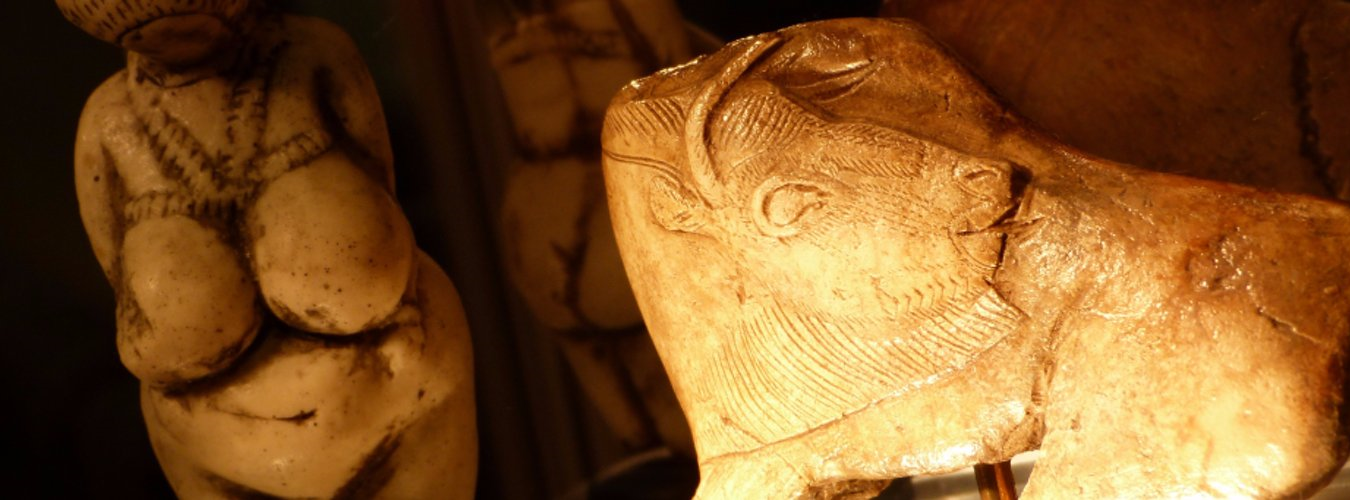Professor Alistair W.G. Pike
Professor of Archaeological Sciences, Head of Archaeology Department
(023) 8059 7295
A.W.Pike@soton.ac.uk
Professor Alistair Pike is a Professor of Archaeological Sciences at the University of Southampton.
After graduating with a BSc in Archaeological Sciences from Bradford University, and working for English Heritage and The British Museum, I completed my doctoral research at Oxford University on uranium-series dating of archaeological bone. After eight years at the University of Bristol, including three years as Head of Archaeology and Anthropology, I moved to the University of Southampton. I research in several areas of archaeological science. These include the development of dating methods for bone beyond the range of radiocarbon, novel applications of dating methods, and the use of isotopes in the reconstruction of human lifeways.
Research interests
My current research focuses on uranium-series disequilibrium dating and the chronology of modern human evolution, and is providing insights into the timing of the appearance of the earliest anatomically modern humans in Africa, and the disappearance of the last Neanderthals in Iberia. In parallel, my work on dating of Palaeolithic cave art has shown the oldest dated cave paintings to be in Iberia at least 25,000 years earlier than the arrival of modern humans, and therefore made by Neanderthals. This has profound implications for our understanding of the origins of symbolic behavior.
My interest in applications of strontium and oxygen isotope analysis to human migration and animal herding studies, has resulted in a large scale isotopic survey of 3rd Millennium BC Saxon-Anhalt in Germany; the positive identification of Princess Eadgyth’s remains in Magdeburg cathedral; a genetic and isotopic study of a late Neolithic nuclear family; and the reconstruction of cattle herding practices in Swiss lake villages. I have worked on the development of laser ablation multi-collector mass spectrometry methods that can now be successfully employed to measure intra-tooth variation of strontium isotopes at high spatial resolution. I have also worked on provenance studies using lead isotopes in copper, bronze and also gold artefacts.
PhD supervision
I am willing to supervise PhD students on projects covering chronological or isotopic methods. Areas include uranium series dating; cave art; isotopic provenance studies; isotopic reconstruction of human lifeways (Sr, O, C, N isotopes).
Current and previous PhD supervision includes:
- Reconstructing Neanderthal and Modern Human landscape use in Portugal using Sr isotopes
- Radiocarbon dating of the Mediterranean Neolithic
- An isotopic study of slavery and enforced migrations
- Strontium diagenesis in tooth enamel
- An isotopic study of diet and body height
- A Comparative Study of Morphological and Biomolecular Methods in Mule Identification
- Climate variability and early farming in Iraqi-Kurdistan and Iran
- Palaeoclimate of Arabia and Human Evolution
- Lifecycles and Use Wear of Archaeological Metal Artefacts, An Engineering Approach
Research group(s)
Centre for the Archaeology of Human Origins
Affiliated research groups
Centre for Archaeology of Human Origins Contracting, Centre for Applied Archaeological Analyses, Osteoarchaeology, Human Evolution, Chronology, Dispersals and Lifeways, Prehistoric Landscapes, Monuments and Materialities
Selected research project(s)
Seasonality, mobility and storage in Palaeolithic hunting societies (Funded by the Leverhulme Trust) 2014-2017
Clive Gamble and Alistair Pike were awarded a grant of £163,228 from the Leverhulme Trust to investigate “Seasonality, mobility and storage in Palaeolithic hunting societies”. This three year project examines one of the tipping points in deep human history, the first appearance of stored foods. The appearance of this ability in human history transformed the peripatetic lifestyles of people living by hunting and gathering. Storing food also opened up the way to domesticating plants and animals by enabling the capture of food via an annual harvest. This development created a whole new lifestyle that turned food into economic power.
Dating the origins and development of Palaeolithic cave painting in Europe by U-series disequilibrium
Cave art is one of the most important sources of information regarding symbolic behaviour and belief systems during the Palaeolithic. This project will employ uranium-series disequilibrium dating of calcite over-growths to investigate its origin and evolution.
Food storage in Palaeolithic hunter-gatherer societies
The technology underpinning food-storage is thought to have originated in Europe at least 30,000 years ago, during the strongly seasonal climates of the Upper Palaeolithic. However, food storage has never been convincingly demonstrated from the archaeological evidence. This project investigates the seasonal mobility of Gravettian-era hunter gatherers and their main prey in an attempt to demonstrate securely whether or not food storage was practised and address the key question: Was the presence of stored animal foods necessary for the complex settlements, art and social identities seen at the Gravettian sites of Dolní Věstonice-Pavlov and Kostenki?
Isotope analysis of well dated cattle and red deer bones from Swiss Neolithic lakeshore settlements as indicator for herd management, dairying, environment and human impact
This collaboration between the Universities of Basel, Bristol and Southampton, funded by the Swiss National Science Foundation, aims to reconstruct changing cattle herding patterns in the period 2800 BC to 4300 BC using cattle teeth from the well dated deposits of Swiss lake village settlements. Isotopic approaches, including laser ablation Sr isotope analysis, can track cattle movement on a seasonal basis and reveal changing patterns of herding and transhumance in response to a changing environment and innovations such as the introduction of dairying.
Promoting digital solutions to rock and cave art research
This 18 month project (2014-2015), funded by a BA/Leverhulme Small Research Grant, aims to advance rock art research through the application of state-of-the-art imaging technologies.
